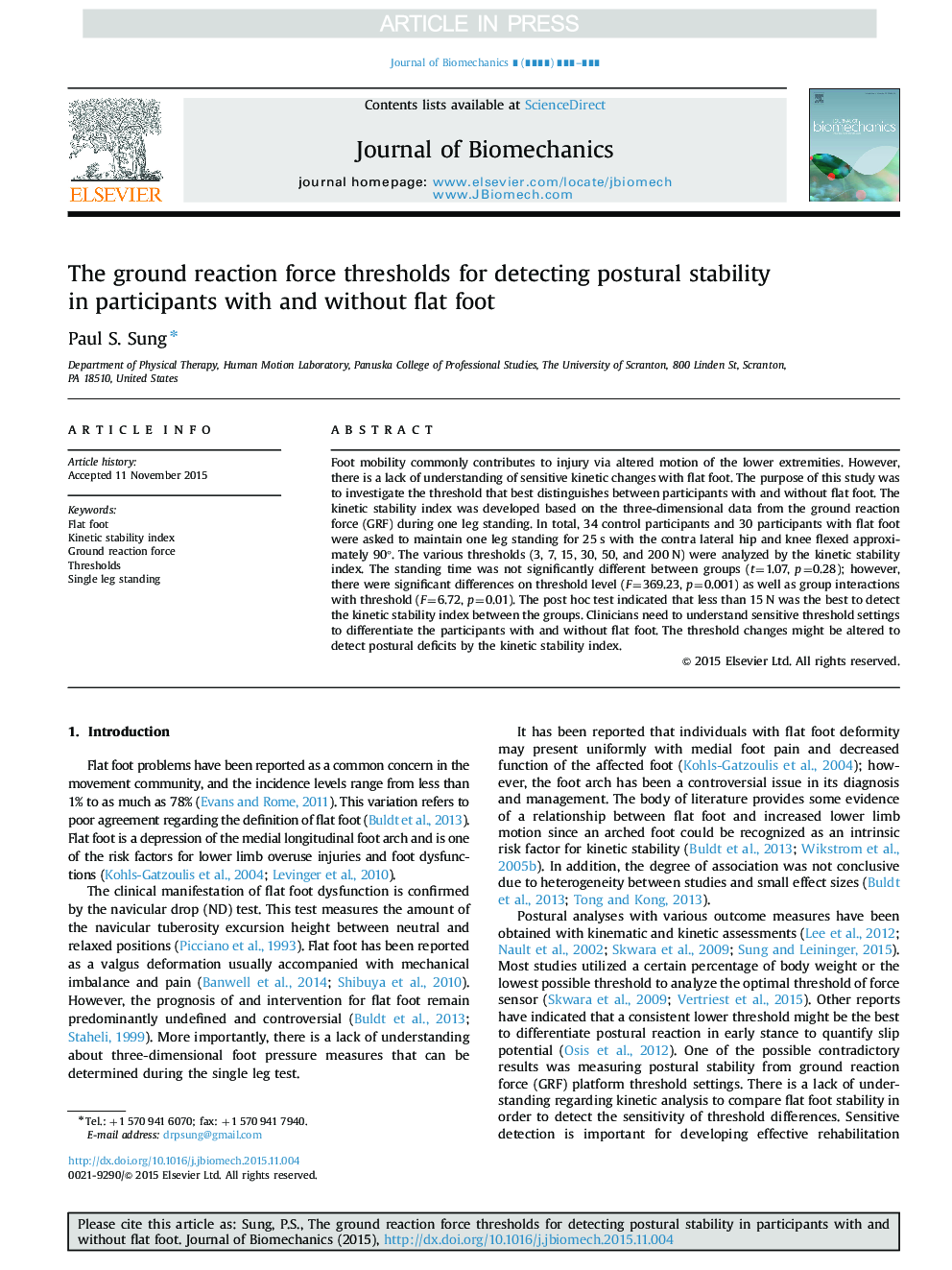| Article ID | Journal | Published Year | Pages | File Type |
|---|---|---|---|---|
| 10431193 | Journal of Biomechanics | 2016 | 6 Pages |
Abstract
Foot mobility commonly contributes to injury via altered motion of the lower extremities. However, there is a lack of understanding of sensitive kinetic changes with flat foot. The purpose of this study was to investigate the threshold that best distinguishes between participants with and without flat foot. The kinetic stability index was developed based on the three-dimensional data from the ground reaction force (GRF) during one leg standing. In total, 34 control participants and 30 participants with flat foot were asked to maintain one leg standing for 25 s with the contra lateral hip and knee flexed approximately 90°. The various thresholds (3, 7, 15, 30, 50, and 200 N) were analyzed by the kinetic stability index. The standing time was not significantly different between groups (t=1.07, p=0.28); however, there were significant differences on threshold level (F=369.23, p=0.001) as well as group interactions with threshold (F=6.72, p=0.01). The post hoc test indicated that less than 15 N was the best to detect the kinetic stability index between the groups. Clinicians need to understand sensitive threshold settings to differentiate the participants with and without flat foot. The threshold changes might be altered to detect postural deficits by the kinetic stability index.
Related Topics
Physical Sciences and Engineering
Engineering
Biomedical Engineering
Authors
Paul S. Sung,
